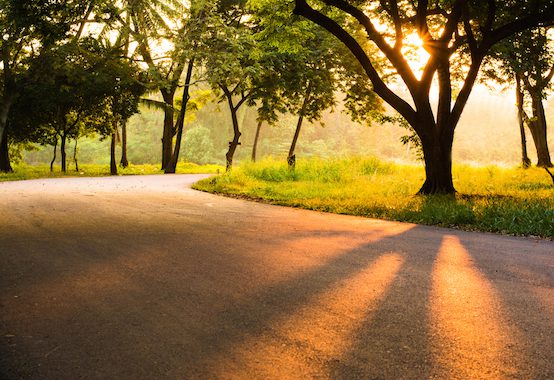The Beauty of Getting Lost

“Does GPS kill curiosity?” That’s the title of a piece David Sturt and Todd Nordstrom wrote over at Forbes yesterday. Ironically, their article doesn’t really give an answer—their points on geocaching and the criminalization of curiosity are metaphors for a discussion of creative innovation in the workplace. They encourage businesspeople to “go somewhere ‘in-between’,” to “lose your map,” but all in a figurative sense. So despite the options offered to innovators in the workplace, we’re left with this question:
… Has the true explorer died within our culture? Have the pathways, roadmaps, proven strategies and GPS units killed off the spirits of great explorers like Magellan, Lewis and Clark, and Marco Polo?
It is good to consider the effect GPS systems have had on our culture. They have greatly enhanced the ease of travel—the ability to get from point A to point B—but they also make it more difficult to “go somewhere ‘in-between,'” as Sturt and Nordstrom write. We journey, most often, on freeways that are disconnected from the social and architectural fabric of passing communities. We are often too busy noting our estimated time of arrival and upcoming traffic patterns to enjoy passing landscapes. The GPS always promotes the most efficient route for drivers to take—but it doesn’t take note of scenic or historic importance. This is great when you’re in a rush, but can be potentially damaging for road trips, when we’re meant to see and savor.
GPS-navigated travel can also encourage a sort of mental laziness on the part of the driver. We aren’t forced to fully remember which turns we take, or which roads we’re driving on. We merely follow the GPS’s step-by-step instructions. Contrast this with traveling by maps (even a printed out Google map): while in the former scenario, we’re fed baby bites of navigation, the latter forces us to pay careful attention to every sign that passes, every twist and turn of the road. We recognize landmarks and road signs, and can easily find our way a second time, sans map.
Maps, of the smartphone and printed variety, are incredibly useful tools. I’m not saying we should stop using them. But there are times when, perhaps, we should consider taking Sturt and Nordstrom’s advice more literally—when we should seek out “in-between” places, rather than focusing on “getting from destination to destination.” Some of the best places are “in-between” larger places: small towns nestled up on mountain roads, scenic hikes tucked away from urban bustle, hole-in-the-wall restaurants hiding from more bustling thoroughfares. Our explorations of place should involve a desire for detours, and a willingness to stop.
We should also be willing to put down the maps. As Sturt and Nordstrom put it, “All of us have grown up in a world where our outcomes have been directed, and expected … we are suggesting you let your curiosity be your guide into some unknown territory.” Following maps—whether a smartphone GPS system, or merely our own travel-worn steps in a familiar town—can prevent us from discovering new and beautiful things. Setting down these guides enables us to discover beauty and mystery, both on the road and in our most familiar places.
In Why Place Matters: Geography, Identity, and Civic Life in Modern America, Ari N. Schulman notes the effect that GPS can have on the way we perceive our roads, our towns, and ourselves as travelers. GPS, he writes, detracts from “discovery through travel,” the mode of adventuring explored in Jack Kerouac’s On the Road and Mark Twain’s Adventures of Huckleberry Finn. These books described adventurers unchained from destination—following road or river, without any preconceived notions of what might lie around the bend. They expressed “the freedom that comes from finding our own way through a world that is not of our own making—and with it, a glimpse of the possibility of reaching out beyond our everyday selves into something greater,” Schulman writes. His words reminded me of a place in J.R.R. Tolkein’s The Lord of the Rings, where wizened old adventurer Bilbo Baggins writes this line of poetry:
The Road goes ever on and on
Down from the door where it began.
Now far ahead the Road has gone,
And I must follow, if I can,
Pursuing it with eager feet,
Until it joins some larger way
Where many paths and errands meet.
And whither then? I cannot say.
Sadly enough, our roads rarely hold such mystery and excitement these days. That doesn’t mean the mystery isn’t there—it’s just that, as Schulman puts it, we often see place as consumers, with a set of data-driven expectations and sensitivities, traveling to a predestined end. “We are adept at identifying points of interest,” he writes, “but pay scant attention to the importance of our approaches to exploring them.”
We need to rekindle a “willingness and hunger to encounter the world as it is, to discover the great sights with the freshness, the newness, that is so much of what we seek from them.” This doesn’t mean we must travel like Huck Finn or Bilbo Baggins—but we should understand the beauty of mystery and lust for adventure that can come when we abandon our road maps and GPS systems. They’re useful tools. But sometimes we should allow stepping outside our door to become a “dangerous business” again, to travel without any idea where we might be “swept off to.”
Comments